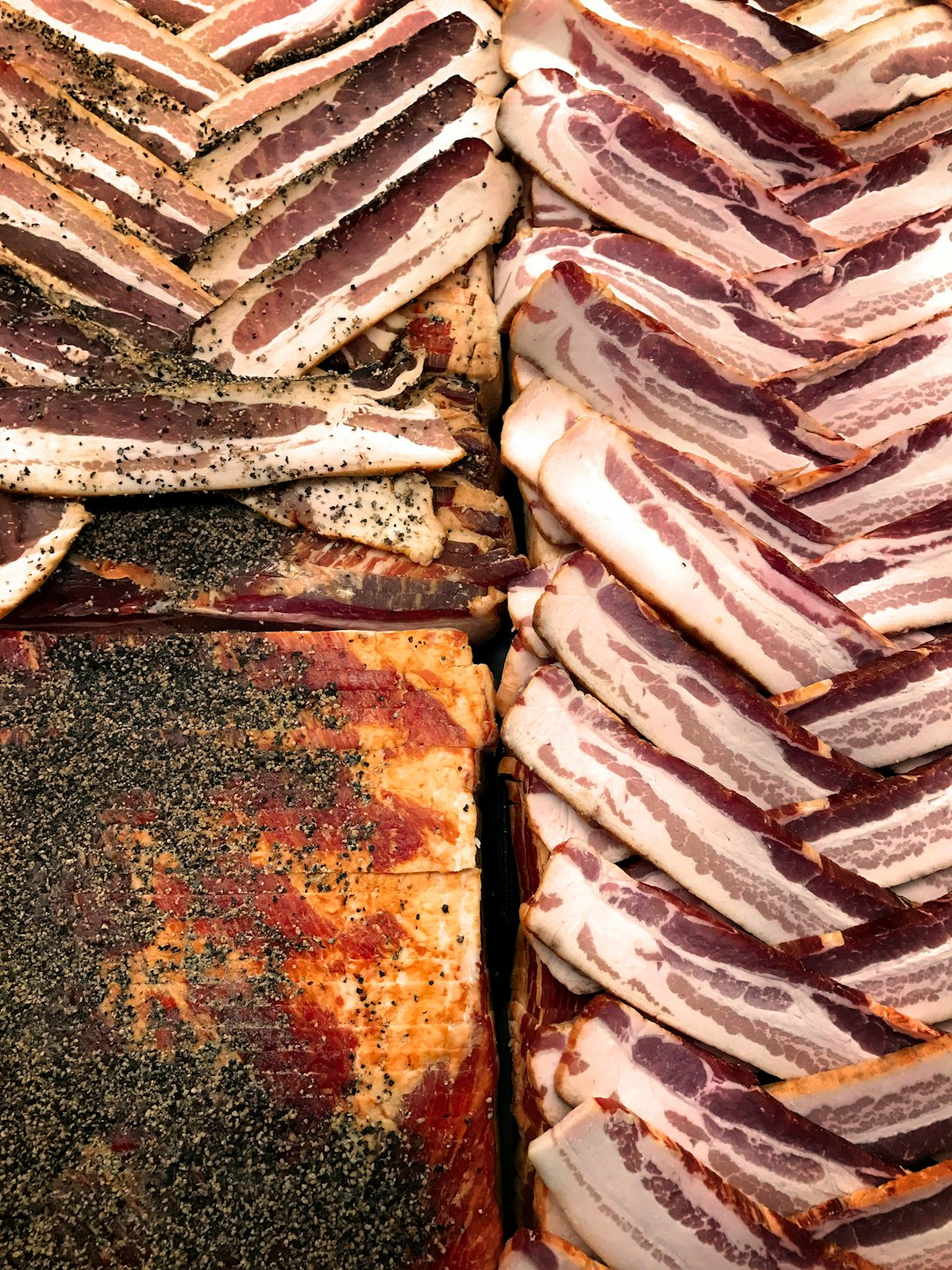Support our educational content for free when you buy through links on our site. Learn more
Can You Be a Partial Vegan? 10 Reasons to Embrace Flexitarianism in 2024! 🌱

Quick Answer: Yes, you can be a partial vegan! Being a flexitarian or part-time vegan means adopting a predominantly plant-based diet while allowing for occasional consumption of animal-based products. This flexible approach to eating offers numerous benefits, including improved health, reduced environmental impact, and increased awareness of animal welfare. So, if you’re looking to make a positive change in your diet without fully committing to veganism, flexitarianism might be the perfect fit for you!
Have you ever wondered if you can enjoy the benefits of a vegan diet without completely giving up animal products? Well, you’re not alone! Many people are embracing a flexible approach to eating, known as flexitarianism or part-time veganism. In this article, we’ll explore the concept of being a partial vegan and delve into the reasons why it’s gaining popularity. So, let’s dive in and discover the wonders of flexitarianism!
Table of Contents
- Quick Answer
- Quick Tips and Facts
- Background: The Rise of Flexitarianism
- What Is a Part-Time Vegan?
- Why Do People Embrace Flexitarianism?
- 10 Reasons to Embrace Flexitarianism
- How to Be a Half Vegan?
- Are There Different Levels of Veganism?
- What Is Semivegetarian?
- Talk to Your Nutritionist
- Take Home Message
- FAQ
- Conclusion
- Recommended Links
- Reference Links
Quick Tips and Facts
- Flexitarianism, also known as part-time veganism, is a dietary approach that emphasizes plant-based foods while allowing for occasional consumption of animal products.
- Being a partial vegan offers numerous health benefits, including weight loss, balanced blood sugar levels, and a reduced risk of certain cancers.
- Flexitarianism is a more sustainable and environmentally friendly way of eating, as it reduces greenhouse gas emissions and conserves water resources.
- By adopting a flexitarian diet, you can increase your fiber intake, improve digestion, and support a healthy gut microbiome.
- Being a part-time vegan can help raise awareness about animal welfare issues and promote a more compassionate approach to food choices.
Background: The Rise of Flexitarianism

In recent years, there has been a significant shift in dietary preferences, with more people opting for plant-based foods. This shift is driven by various factors, including health concerns, environmental awareness, and ethical considerations. As a result, flexitarianism has emerged as a popular dietary approach that allows individuals to enjoy the benefits of a vegan diet while still incorporating animal products in moderation.
What Is a Part-Time Vegan?
Being a part-time vegan means following a predominantly plant-based diet while occasionally including animal-based products. This flexible approach to eating allows individuals to enjoy the health benefits of a vegan lifestyle without completely eliminating animal products from their diet. It’s all about finding a balance that works for you and aligns with your personal values and goals.
Why Do People Embrace Flexitarianism?
There are several reasons why people choose to embrace flexitarianism:
-
Health Considerations: Many individuals adopt a flexitarian diet for health reasons. By increasing their intake of plant-based foods, they can improve their overall health, reduce the risk of chronic diseases, and maintain a healthy weight.
-
Environmental Impact: Flexitarianism is a more sustainable way of eating compared to a traditional Western diet. By reducing the consumption of animal products, flexitarians help lower greenhouse gas emissions, conserve water resources, and mitigate deforestation.
-
Ease of Transition: Transitioning to a vegan lifestyle can be challenging for some individuals. Flexitarianism offers a more gradual approach, allowing people to ease into a plant-based diet at their own pace.
-
Cultural and Social Factors: In certain cultural or social contexts, it may be challenging to adhere to a strict vegan diet. Being a part-time vegan allows individuals to navigate social situations more easily while still making conscious food choices.
-
Availability of Vegan Options: While the availability of vegan food has significantly improved in recent years, it may still be limited in some areas. Being a flexitarian allows individuals to enjoy plant-based meals while still having the flexibility to incorporate animal products when necessary.
10 Reasons to Embrace Flexitarianism
-
Improved Health: A flexitarian diet rich in fruits, vegetables, whole grains, and legumes provides essential nutrients, vitamins, and minerals that support overall health and well-being.
-
Weight Loss and Balanced Blood Sugar: By focusing on plant-based foods, flexitarians often experience weight loss and improved blood sugar control, reducing the risk of chronic conditions like diabetes.
-
Reduced Risk of Colorectal, Breast, and Prostate Cancer: Studies have shown that a plant-based diet can lower the risk of certain types of cancer, including colorectal, breast, and prostate cancer.
-
Lower Environmental Impact: Flexitarianism helps reduce greenhouse gas emissions, conserve water resources, and protect biodiversity, making it a more sustainable choice for the planet.
-
Increased Fiber Intake: Plant-based foods are rich in dietary fiber, which promotes healthy digestion, prevents constipation, and supports a healthy gut microbiome.
-
Supports Animal Welfare: By reducing the consumption of animal products, flexitarians contribute to raising awareness about animal welfare issues and promote a more compassionate approach to food choices.
-
Affordability: Plant-based foods are often more affordable than animal products, making a flexitarian diet a cost-effective option for individuals and families.
-
Versatility and Culinary Exploration: Being a part-time vegan opens up a world of culinary possibilities, encouraging individuals to explore new flavors, ingredients, and cooking techniques.
-
Improved Digestion: Plant-based foods are generally easier to digest, leading to reduced bloating, improved bowel movements, and better overall digestive health.
-
Long-Term Sustainability: Unlike restrictive diets, flexitarianism is a sustainable long-term approach to eating that can be easily maintained and enjoyed for years to come.
How to Be a Half Vegan?
Transitioning to a flexitarian lifestyle is a personal journey, and there is no one-size-fits-all approach. However, here are some tips to help you embrace flexitarianism:
- Start by gradually reducing your consumption of animal products and increasing your intake of plant-based foods.
- Experiment with new recipes and ingredients to make your meals more exciting and flavorful.
- Educate yourself about the nutritional benefits of plant-based foods to ensure you’re meeting your dietary needs.
- Find support from like-minded individuals or join online communities to share experiences and get inspiration.
- Be flexible and forgiving with yourself. Remember that being a flexitarian is about progress, not perfection.
Are There Different Levels of Veganism?
Yes, there are different levels of veganism that individuals can choose to follow based on their personal preferences and beliefs. These include:
- Strict Vegan: A strict vegan avoids all animal products, including meat, dairy, eggs, honey, and any other ingredients derived from animals.
- Flexitarian: A flexitarian, as mentioned earlier, follows a predominantly plant-based diet but allows for occasional consumption of animal products.
- Pescatarian: A pescatarian avoids meat but includes fish and seafood in their diet.
- Vegetarian: A vegetarian excludes meat but may consume dairy products, eggs, and honey.
- Semivegetarian: A semivegetarian reduces their consumption of meat but may still include it in their diet occasionally.
Talk to Your Nutritionist
Before making any significant changes to your diet, it’s always a good idea to consult with a registered dietitian or nutritionist. They can provide personalized guidance and ensure that you’re meeting your nutritional needs while following a flexitarian lifestyle.
Take Home Message
Being a partial vegan, or flexitarian, allows you to enjoy the benefits of a predominantly plant-based diet while still incorporating animal products in moderation. Flexitarianism offers numerous health benefits, reduces environmental impact, and promotes a more compassionate approach to food choices. So, if you’re looking to make a positive change in your diet without fully committing to veganism, flexitarianism might be the perfect fit for you!
FAQ

What is a partial vegan called?
A partial vegan is often referred to as a flexitarian or a part-time vegan. This dietary approach emphasizes plant-based foods while allowing for occasional consumption of animal products.
How to be a half vegan?
To be a half vegan, or flexitarian, you can start by gradually reducing your consumption of animal products and increasing your intake of plant-based foods. Experiment with new recipes, educate yourself about plant-based nutrition, and find support from like-minded individuals or online communities.
Read more about “Is Flexitarian the Same as Mediterranean Diet? … 🥦🌍”
Are there different levels of vegan?
Yes, there are different levels of veganism, ranging from strict veganism (avoiding all animal products) to flexitarianism (allowing for occasional consumption of animal products). Other levels include pescatarianism (including fish and seafood), vegetarianism (excluding meat but including dairy and eggs), and semivegetarianism (reducing meat consumption but still including it occasionally).
What is semivegetarian?
Semivegetarianism refers to a dietary approach that involves reducing the consumption of meat while still including it occasionally. Semivegetarians may also choose to exclude certain types of meat, such as red meat, while still consuming poultry or fish.
Conclusion

In conclusion, being a partial vegan, or flexitarian, offers a flexible and sustainable approach to eating that allows individuals to enjoy the benefits of a predominantly plant-based diet while still incorporating animal products in moderation. Flexitarianism provides numerous health benefits, reduces environmental impact, and promotes a more compassionate approach to food choices. So, why not embrace flexitarianism and embark on a journey towards a healthier and more sustainable lifestyle?
🌱 Recommended Links:
- Flexitarian Basics
- Flexitarian Lifestyle
- Flexitarian Nutrition Facts
- Benefits of Flexitarian Diet
- Healthy Meal Planning
- 2023 Flexitarian Vegan: The Best of Both Worlds
🔗 Reference Links:
- Derbyshire E 2017, Flexitarian diets and health: a review of the evidence-based literature, Front Nutr.
- Miketinas D, Champagne C, Wilson T, et al. 2022, The vegetarian/flexitarian diets. Nutrition guide for physicians and related healthcare professionals. Nutritional and health. Humana, Champ; 181-191
- Himics M, Giannakis E, Kushta J, et al. 2022, Co-benefits of a flexitarian diet for air quality and human health in Europe, Ecol Econ.
- Springmann M, Clark M, Rayner M, Scarborough P, Webb P. 2021, The global and regional costs of healthy and sustainable dietary patterns: a modeling study, Lancet Planet Health.




